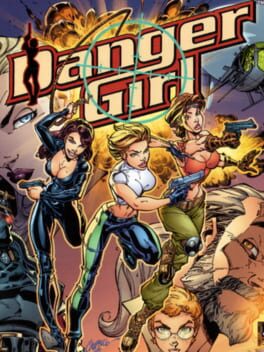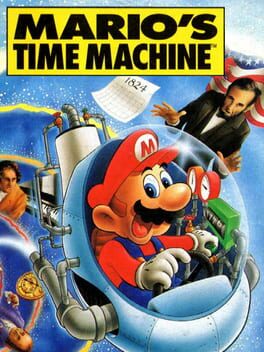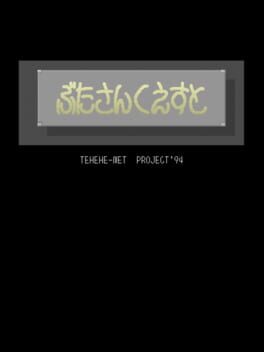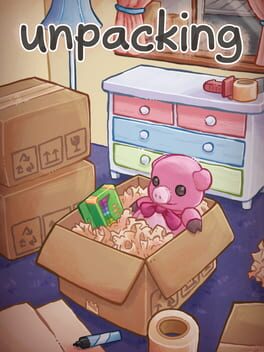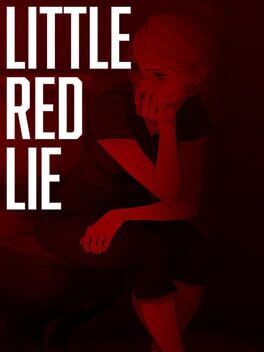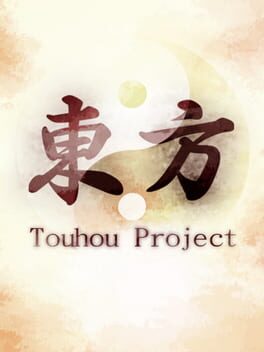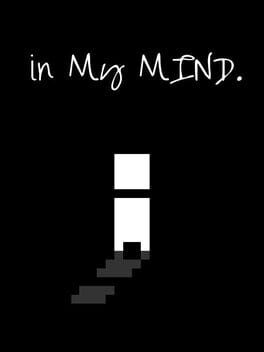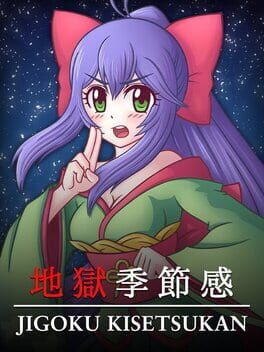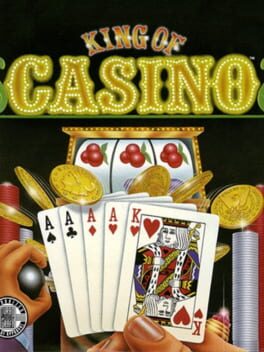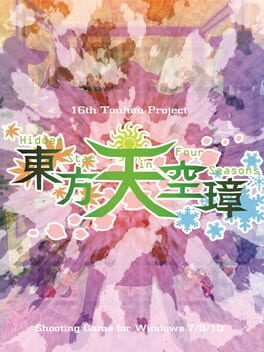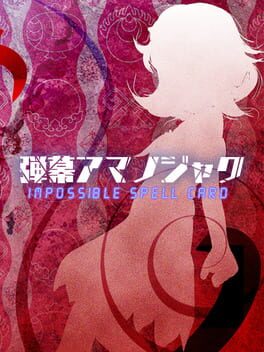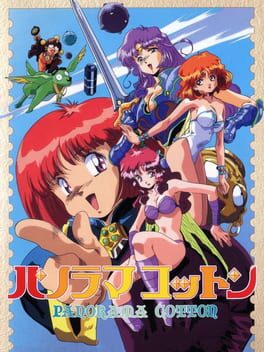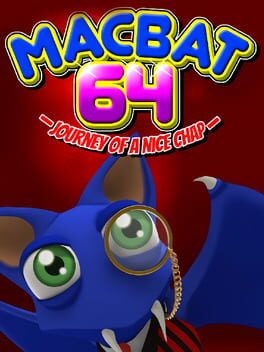Funbil
2000
1993
1994
Wanted to make another post separate from my original review to share an English translation I've done of this game on YouTube, for anyone who can't read Japanese or simply doesn't want to bother emulating it:
https://youtu.be/X15BAa2dX6k
The game is simple enough that watching it as opposed to playing shouldn't be too drastically different of an experience. Please enjoy.
https://youtu.be/X15BAa2dX6k
The game is simple enough that watching it as opposed to playing shouldn't be too drastically different of an experience. Please enjoy.
2021
The bandwagon of games being made with the express purpose of calling themselves “wholesome” is torpedoing forward at mind-melting speeds and only continues to gain traction. By now, whatever authentic sentiment that used to drive this movement has since been appropriated into a manufactured “aesthetic” to serve anyone who wants a GIF of their game to blow up on Twitter. What this means for me is that I nearly passed up on an immaculate game because of my growing cynicism and jadedness. Make no mistake about it; Unpacking truly is the superbly unique game everyone is making it out to be.
Anyone else can tell you about the inspired marriage of puzzle game and narrative – an unprecedented twist on “environmental storytelling,” one of the humble video gamist’s favorite phrases to wield – but what struck me equally about Unpacking was its unconventional story structure. To leave things intentionally vague, it feels like the game ends about three separate times. This is because the game follows a clear narrative arc where things get worse, and then they get better. Normally stories end right there, when things get better. We’ve had our hero’s journey, let’s wrap it up; but Unpacking keeps going. The story pushes on to explore just how much better things can continue to become. “Better” isn’t something that just happens once, it’s a continued lifetime of joy and love that rolls onward and forward, and then onward and forward still. What would ordinarily be a footnote or epilogue in other stories is the crux of Unpacking’s heart: why not allow me to play through my own epilogue? If I go on to live “happily ever after,” why not allow me to actually live through that “happily ever after?” Why must stories always stop there? Critically, this “happily ever after” in Unpacking winds up being significantly longer than any of the tribulations that had to be overcome to reach it. Nothing bad lasts forever. There’s a light at the end of the tunnel, but the point is not to simply reach that light; it’s to bask in it, revel in it, sink into its comfort and its warmth and hold on to its embrace for as long as it can last.
Things get better, yes – but they can also keep getting better, too.
Anyone else can tell you about the inspired marriage of puzzle game and narrative – an unprecedented twist on “environmental storytelling,” one of the humble video gamist’s favorite phrases to wield – but what struck me equally about Unpacking was its unconventional story structure. To leave things intentionally vague, it feels like the game ends about three separate times. This is because the game follows a clear narrative arc where things get worse, and then they get better. Normally stories end right there, when things get better. We’ve had our hero’s journey, let’s wrap it up; but Unpacking keeps going. The story pushes on to explore just how much better things can continue to become. “Better” isn’t something that just happens once, it’s a continued lifetime of joy and love that rolls onward and forward, and then onward and forward still. What would ordinarily be a footnote or epilogue in other stories is the crux of Unpacking’s heart: why not allow me to play through my own epilogue? If I go on to live “happily ever after,” why not allow me to actually live through that “happily ever after?” Why must stories always stop there? Critically, this “happily ever after” in Unpacking winds up being significantly longer than any of the tribulations that had to be overcome to reach it. Nothing bad lasts forever. There’s a light at the end of the tunnel, but the point is not to simply reach that light; it’s to bask in it, revel in it, sink into its comfort and its warmth and hold on to its embrace for as long as it can last.
Things get better, yes – but they can also keep getting better, too.
2017
There was a time in my life when I touted this as one of my top 5 favorite games of all time. My reasoning was this: yeah, the combat kinda sucks, all the characters are totally flat, the character designs are shameless in a way that isn't cool, but the music is incredible and it made me think about some really fascinating stuff. It never really develops on those ideas in the game itself but I like what it makes me think about removed from the playing experience.
Nearly three years later, the effect of this game is wearing off, I've played more games and lived through more experiences, and I'm realizing: oh, that's actually, uh, not that great!
Nearly three years later, the effect of this game is wearing off, I've played more games and lived through more experiences, and I'm realizing: oh, that's actually, uh, not that great!
2017
I just kinda can’t bring myself to finish this game. I played three hours (about half the game’s total runtime) over a month ago and found some shockingly honest themes and concepts which I was truly impressed by, but it’s so dismal and cruel that thinking about picking it back up again is exhausting. It’s too well-written to the point that the game definitely knows it’s well-written and lavishes in itself. A poignant critique of people who think they’re doing good and people who know they’re doing bad, strangely balanced by an oppressively bleak world view that seems to revel in pointing to someone new and saying “oh and by the way, this kind of person sucks too.” Feels a little like the kind of person who touts how intelligent they are by constantly talking about how awful the world is. Like yeah, you’re right, but going so far out of your way to find the flaw in everything kinda just makes me not want to talk to you.
TBD
2018
On paper, it’s a recipe that seems like it should work well: an abstract danmaku where the “bosses” are emotions and the bullet patterns reflect the feeling of experiencing that emotion. Given such an inherently unique and interesting premise (I’m sure you’re already imagining all sorts of fascinating ways this idea could be developed on), it’s a shame that in My MIND can’t quite find an engaging angle to approach any of its components from.
As a danmaku, in My MIND stumbles out of the door pretty immediately. All but one of the 18 total stages share the exact same background, which would not necessarily be a problem for an obviously low-budget project like this, if not for the fact that this background constantly has haphazard particle effects whizzing by all over the screen for absolutely no reason at all. They’re never thematic, they never indicate anything, it’s just extra visual noise that I can only assume must be there to help make the blank black void that is the entire game’s background feel a little more dynamic than 1978’s Space Invaders. In any other danmaku, this would be a death sentence; these are games where bullets fill the screen, so having clear visibility of what’s safe and what’s dangerous is critical during every single microsecond of play. in My MIND, however, skirts this problem entirely by not posing any particular challenge at all until about halfway through its optional second playthrough. The most difficult thing in this game is how every single bullet the bosses shoot out are only ever a single color and leave behind their own trails of identically-colored superfluous particle effects, making for regular instances of not exactly being able to tell where a particular bullet is headed or even where its hitbox is hidden inside of these monochrome clouds. In this way, the extra visual noise in the background doesn’t actually impact the game too much, but it’s only because there’s not all that much for it to impact in the first place… Not a great position to be in. In a game about internal struggles and mental turmoil, having every single boss be a breeze to get past almost makes it feel like a parody made by the kind of guy who’d say things like “pick yourself up by your bootstraps.”
The only thing that lets me know this isn’t a parody of mental health issues is that the game takes itself so stone-cold seriously. Every single boss has a single line of dialogue to introduce itself, posed as the kind of troublesome thoughts a person would think to themselves, then upon defeat a resolution to the thought is offered. Anyone who has actually struggled with troubling or self-destructive thoughts likely chuckled at the simplicity of this and you’d be right to. It comes across with the same tactlessness as the kinds of tweets that blow up every now and then saying things like “you’re valid and nobody can tell you otherwise 💜,” which is so intangibly vague that it can’t really mean anything to anyone. The sentiment is obviously coming from a place of caring and consideration - and of course there’s many times where consoling someone is more important than trying to address the root of an issue at any particular moment - but this game seems to be posing these “well, it’s actually fine though,” remarks as though they are capable of resolving the conflicts they’re addressing. Dressing it up in prosaic one-liners does not make them more effective.
All of this coalesces in the boss fights against the negative emotions prompting these thoughts, like Loneliness or Hopelessness. As mentioned earlier, the bullet patterns attempt to represent how it feels to deal with these thoughts. At best they’re predictably shallow, at worst they’re completely unrelated. Confusion’s bullets bounce around the screen making for unpredictable patterns, but Shame just has a fairly nondescript mathematical sequence. Where my heart sank is when I saw bosses starting to copy previous bosses patterns. The emotions trying to be represented here are all pretty distinct from each other, it’s not like there’s an especially compelling thematic reason for them to be recycling old patterns, and there’s no excuse for some of them to just be doing regular danmaku patterns that have little to do with the associated feeling. The premise of representing negative feelings as danmaku patterns is all this game has, and it doesn’t even seem all that interested in exploring it.
Ultimately, this game is trying to wield mature themes in a style of game renowned for its inspired and creative ways of treating the screen like a canvas, but unfortunately it just doesn’t seem familiar or comfortable enough with either of these aspects to build anything cohesive on its framework.
As a danmaku, in My MIND stumbles out of the door pretty immediately. All but one of the 18 total stages share the exact same background, which would not necessarily be a problem for an obviously low-budget project like this, if not for the fact that this background constantly has haphazard particle effects whizzing by all over the screen for absolutely no reason at all. They’re never thematic, they never indicate anything, it’s just extra visual noise that I can only assume must be there to help make the blank black void that is the entire game’s background feel a little more dynamic than 1978’s Space Invaders. In any other danmaku, this would be a death sentence; these are games where bullets fill the screen, so having clear visibility of what’s safe and what’s dangerous is critical during every single microsecond of play. in My MIND, however, skirts this problem entirely by not posing any particular challenge at all until about halfway through its optional second playthrough. The most difficult thing in this game is how every single bullet the bosses shoot out are only ever a single color and leave behind their own trails of identically-colored superfluous particle effects, making for regular instances of not exactly being able to tell where a particular bullet is headed or even where its hitbox is hidden inside of these monochrome clouds. In this way, the extra visual noise in the background doesn’t actually impact the game too much, but it’s only because there’s not all that much for it to impact in the first place… Not a great position to be in. In a game about internal struggles and mental turmoil, having every single boss be a breeze to get past almost makes it feel like a parody made by the kind of guy who’d say things like “pick yourself up by your bootstraps.”
The only thing that lets me know this isn’t a parody of mental health issues is that the game takes itself so stone-cold seriously. Every single boss has a single line of dialogue to introduce itself, posed as the kind of troublesome thoughts a person would think to themselves, then upon defeat a resolution to the thought is offered. Anyone who has actually struggled with troubling or self-destructive thoughts likely chuckled at the simplicity of this and you’d be right to. It comes across with the same tactlessness as the kinds of tweets that blow up every now and then saying things like “you’re valid and nobody can tell you otherwise 💜,” which is so intangibly vague that it can’t really mean anything to anyone. The sentiment is obviously coming from a place of caring and consideration - and of course there’s many times where consoling someone is more important than trying to address the root of an issue at any particular moment - but this game seems to be posing these “well, it’s actually fine though,” remarks as though they are capable of resolving the conflicts they’re addressing. Dressing it up in prosaic one-liners does not make them more effective.
All of this coalesces in the boss fights against the negative emotions prompting these thoughts, like Loneliness or Hopelessness. As mentioned earlier, the bullet patterns attempt to represent how it feels to deal with these thoughts. At best they’re predictably shallow, at worst they’re completely unrelated. Confusion’s bullets bounce around the screen making for unpredictable patterns, but Shame just has a fairly nondescript mathematical sequence. Where my heart sank is when I saw bosses starting to copy previous bosses patterns. The emotions trying to be represented here are all pretty distinct from each other, it’s not like there’s an especially compelling thematic reason for them to be recycling old patterns, and there’s no excuse for some of them to just be doing regular danmaku patterns that have little to do with the associated feeling. The premise of representing negative feelings as danmaku patterns is all this game has, and it doesn’t even seem all that interested in exploring it.
Ultimately, this game is trying to wield mature themes in a style of game renowned for its inspired and creative ways of treating the screen like a canvas, but unfortunately it just doesn’t seem familiar or comfortable enough with either of these aspects to build anything cohesive on its framework.
1994
The objective of Buta-san Quest is simple: fight some silly piggy monsters, collect the crystals, defeat the demon pig king, and listen to some hot tunes along the way – all within a fraction of a fraction of a fraction of the total play time contemporaneous role playing games require.
Being a game that was made mostly to test the X68000’s music driver, Buta-san Quest is more concerned with its music than its gameplay. What this results in is a shockingly tight game which can easily be completed in under an hour, poking fun at the RPG genre and stripping its conventions down to an absurdist minimum. The irreverent tone permeating every single line of dialogue and the lack of any strategic options during random combat encounters could get tiresome in a longer game that lavished in its smarm, but everything in Buta-san Quest is so lightning-quick that its simplicity and playfulness remains refreshing and charming for the entire duration of the experience. The game may have just been an excuse for a couple nerds in university to push the sound limitations of outdated hardware, but don’t be fooled by its ludicrous enemy designs and knockabout anti-plot; the elegant momentum of Buta-san Quest’s rapidfire design philosophy sings with the same refined sensibilities as its soundtrack.
Being a game that was made mostly to test the X68000’s music driver, Buta-san Quest is more concerned with its music than its gameplay. What this results in is a shockingly tight game which can easily be completed in under an hour, poking fun at the RPG genre and stripping its conventions down to an absurdist minimum. The irreverent tone permeating every single line of dialogue and the lack of any strategic options during random combat encounters could get tiresome in a longer game that lavished in its smarm, but everything in Buta-san Quest is so lightning-quick that its simplicity and playfulness remains refreshing and charming for the entire duration of the experience. The game may have just been an excuse for a couple nerds in university to push the sound limitations of outdated hardware, but don’t be fooled by its ludicrous enemy designs and knockabout anti-plot; the elegant momentum of Buta-san Quest’s rapidfire design philosophy sings with the same refined sensibilities as its soundtrack.
1990
Far from being polished to a sheen, but that winds up actually being in the game's favor. Muddy colors on chunky pixels, groggy chiptunes with a gritted edge, and unceremonious, matter-of-fact information displays coalesce into a single monotonous-yet-classy adaptation of classic casino gambling games. Cards are presented without any animations and numbers go up or down in the blink of a single calculation. The uninterrupted repetition of these actions lulls into a sleepy malaise of simply going through the motions and observing which ways the numbers go. In a way it's hypnotic, almost trance-like or meditative, compared to other gambling games that chase the adrenaline high of screaming celebratory noises and flashing light shows upon hitting the jackpot on a slot machine. It's a good thing the PC Engine can't run real transactions with my actual money.
There's some great ideas wrapped up in this one, but it feels like the least-readable entry since the PC-98 games. The game's gorgeous, but too many things are too similarly colored and there seems to be more visual fluff than normal, as well. If the visibility of this entry was more clear it might have been one of my favorites!
1994
